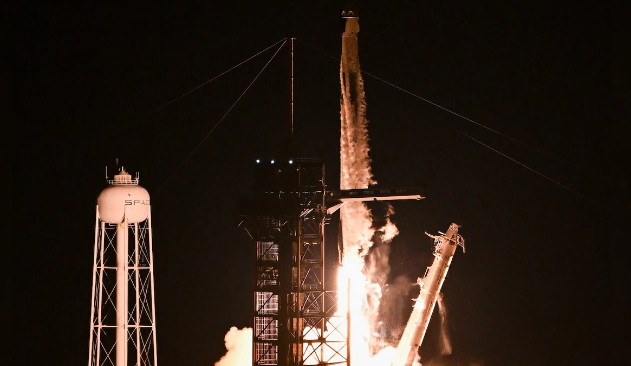On Tuesday, SpaceX launched its groundbreaking Polaris Dawn mission, propelling a four-member civilian crew into orbit. This mission, led by Jared Isaacman, CEO of Shift4 Payments, marks a significant milestone as it includes the first spacewalk by non-professional astronauts.
The crew, including Isaacman, mission pilot Scott Poteet, and SpaceX engineers Sarah Gillis and Anna Menon, is set to reach an altitude of 870 miles (1,400 kilometers) above Earth. Their journey aims to surpass previous manned missions in distance and ambition.
The mission’s highlight is the upcoming spacewalk, scheduled for Thursday at 0623 GMT, with a backup slot on Friday. The astronauts will wear newly designed SpaceX extravehicular activity (EVA) suits equipped with advanced features, including heads-up displays and helmet cameras.
Unlike previous missions, the Crew Dragon capsule lacks an airlock, so the astronauts will experience the vacuum of space during the approximately 15-minute spacewalk. This setup will allow two of the crew members to venture outside while tethered to the spacecraft.
Isaacman expressed his excitement about the mission, stating, “The world is more interesting when we journey among the stars. We aim to develop and test technologies that will help SpaceX achieve its long-term goal of making human life interplanetary.”
The launch took place from Kennedy Space Center in Florida atop a Falcon 9 rocket, with celebrations erupting as the spacecraft successfully separated from the main engine. Elon Musk, SpaceX’s CEO, also joined the celebrations.
The Polaris Dawn mission will enter the Van Allen radiation belt, a high-radiation zone that presents potential health risks. Although the crew will orbit higher than the International Space Station, they will not surpass the Apollo 13 record of 248,000 miles from 1970.
Isaacman, who previously funded the SpaceX Inspiration4 mission, has invested significantly in this project. The mission team has undergone over two years of rigorous training, including simulator sessions, skydiving, centrifuge training, and scuba diving.
Polaris Dawn is the first of three missions planned under the Polaris program, a collaboration between Isaacman and SpaceX. The final mission aims to be the inaugural crewed flight of SpaceX’s Starship prototype, pivotal for future Mars exploration.
In addition to the spacewalk, the crew will test laser-based satellite communications with Starlink’s constellation and conduct 36 scientific experiments, including research on contact lenses with embedded microelectronics for eye pressure monitoring.
The Polaris Dawn mission represents a significant step forward in space exploration and technology, bringing civilian space travel closer to reality and paving the way for future advancements in human spaceflight.




